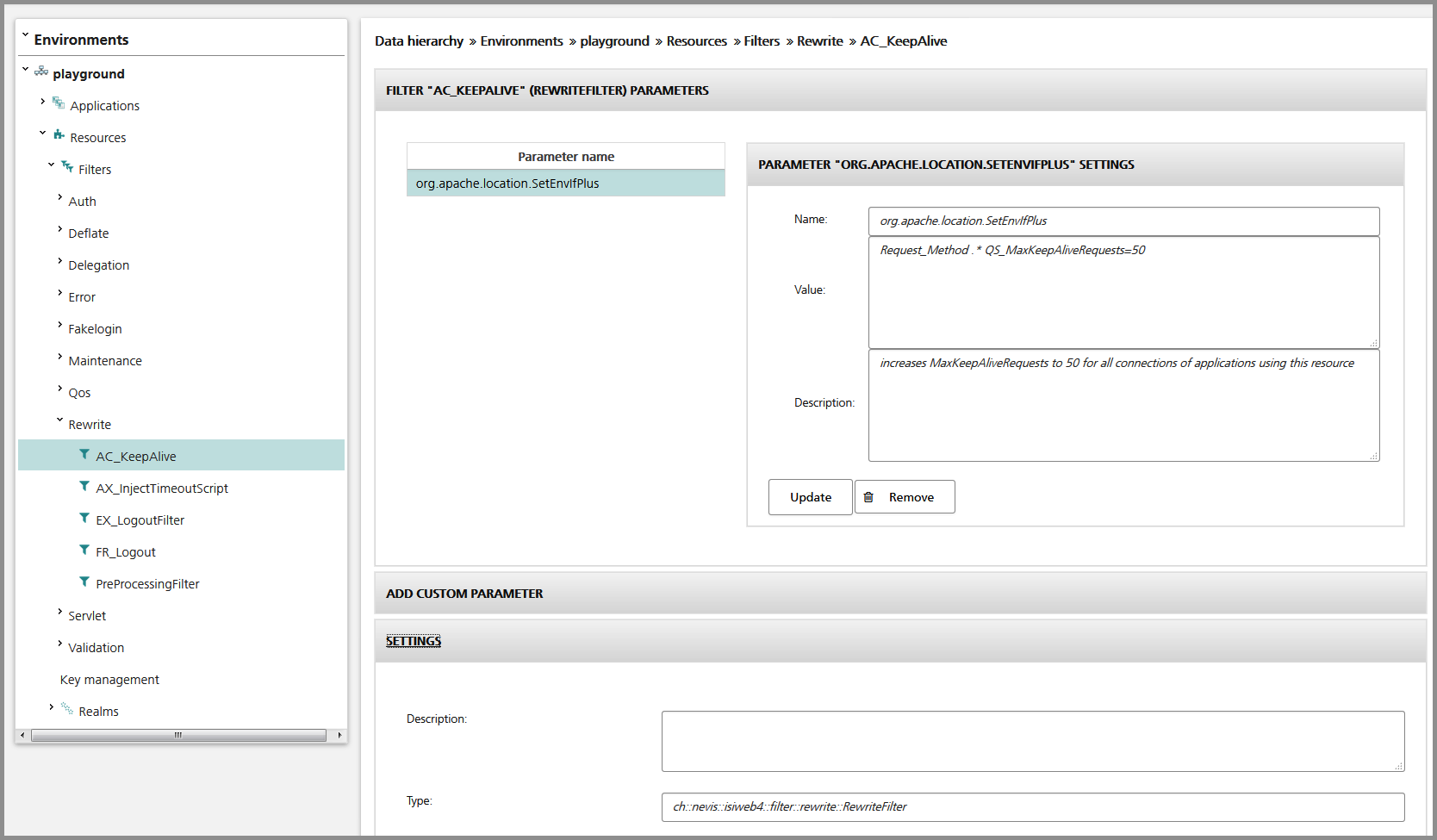Keep-alive
HTTP keep-alive is used to allow the browser to exchange multiple requests/responses using the same TCP connection. Avoiding the creation of a new TCP connection for every HTTP request improves request latency a lot by reducing the number of TCP packages required for every handshake.
The base settings are applied to the nevisProxy instance within the infrastructure view, see the figure: Sample nevisProxy instance view, in the chapter: Server. The defaults are set to low values with the intention to release connections often allowing as many clients to communicate with the nevisProxy as possible, without having too many connections occupied at the very same time.
However, you may change these settings, e.g., if you have many web 1.0 applications with lots of media embedded in their HTML pages. A higher value for the number of allowed requests per connection may improve the performance while loading these pages. The adjustment may be done by mapping a filter to your application requiring higher keep-alive settings.

You may use the configuration template "Acceleration" to configure this use case. For more information, see the chapter: Acceleration.